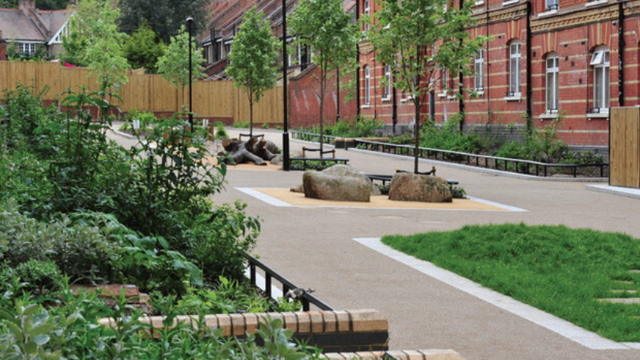Acting now for the future

We’re making our net-zero goals real with the release of our Sustainability Action Plan. It lays out clear guidelines for what we, our colleagues, residents and partners, need to do to become a more sustainable organisation.
Published: 05/04/2024
The plan coincides with the release of our emissions data for 2023 and confirmation that we’ve been awarded RITTERWALD’s Certified Sustainable Housing label for a third year.
As part of the plan, we’re upgrading and improving people’s homes, building new energy efficient homes and scaling up our efforts to support sustainable places with residents and colleagues. Some of the actions we’re already taking include electrifying our vehicle fleet, installing an energy management system, looking at ways to increase biodiversity and providing energy advice to residents.
Requires a big change
“Achieving net zero carbon by 2050 requires a big change in the way everyone operates,” says Richard Ellis, Director of Sustainability. “And while 26 years feels a long way off, we all need to act now.
“Our Sustainability Action Plan gives more detail about what we’re doing now to meet the priorities we outlined in our Environmental Sustainability Strategy. It sets out our approach over the next three years and aims to encourage our colleagues, residents and partners to come on this journey with us.”
The re-accreditation from residential real estate consultancy RITTERWALD helps ratify and benchmark our sustainability performance. This year, we maintained our top ranking of frontrunner status for our social and governance activities and ambassador status for environmental.
Embraces lots of different sustainability topics
We received extra points for what RITTERWALD described as a ‘very comprehensive’ brownfield regeneration project at Holloway Park in Islington.
Here we’re working with a range of partners to build hundreds of new social homes and community facilities on the site of the former Holloway Prison. RITTERWALD said the project embraced lots of different sustainability topics. See more on the project.
Working to reduce our carbon footprint
Our overall emissions increased by 13.6 percent to 386,509 tn/CO2e in the year to the end of March 2003. The increase can be attributed to the inclusion of Town & Country Housing (TCH) in the numbers for the first time. If we exclude the numbers from TCH, our carbon emissions fell by 2.1 percent. The reason for the small decline is that as we spend more on our homes, we also use more goods and services which in turn add to our overall emissions.
Our carbon intensity ratio per home fell from 2.06 tn/CO2e to 2.01 tn/CO2e. This shows we’re moving in the right direction, just not fast enough. The intensity ratio is based on the emissions we have more control over, such as the energy we buy like gas and vehicle fuel and electricity.
As well as our Sustainability Action Plan, we also have a new Decarbonisation Roadmap, which focuses on what we need to do to cut our greenhouse gas emissions. We’re already making progress in some areas, such as reducing the direct emissions from our operations and activities (down 8.2 percent) but have significant work to do in other areas like our supply chain (up 15.4 percent).
To find out more about how we’re taking action now and to see what you can do to play your part, read our Sustainability Action Plan.
Contact us
Got specific questions about Peabody? We’re always happy to help.
